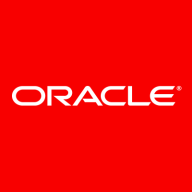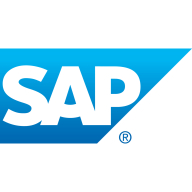

PeopleSoft and SAP SuccessFactors are competing in the realm of Human Capital Management (HCM) solutions. Current data suggests that SAP SuccessFactors may have an edge due to its cloud-based deployment and continuous feature updates.
Features: PeopleSoft offers robust integration capabilities, extensive configurability, and enterprise-wide functionality ideal for HR, finance, and procurement processes. SAP SuccessFactors is favored for its cloud-based HR management solutions, performance management, and advanced analytics.
Room for Improvement: PeopleSoft requires enhancements in mobility and user interface, as well as improvements in documentation and integration. SAP SuccessFactors could improve module integration, user experience, and flexibility for custom implementations.
Ease of Deployment and Customer Service: PeopleSoft's on-premises deployment grants infrastructure control but demands dedicated IT resources, with customer support needing improvement. SAP SuccessFactors' cloud-based deployment offers flexibility, better support consistency, but room for improvement in response times and technical clarity.
Pricing and ROI: PeopleSoft's perpetual licensing involves high upfront costs, favoring large enterprises with customization needs and offering good ROI when properly implemented. SAP SuccessFactors' subscription model can become costly depending on user needs, providing flexibility and scalability, yet the cost may be restrictive for smaller enterprises seeking comprehensive HR features.
If a customer designs custom applications and encounters issues, PeopleSoft will not provide service for those custom applications.
This rating reflects the limitation that custom applications do not receive support.
We have implemented it for 25,000 employees, scaling from 7,000 to 25,000 using the same set of rules, and it was not difficult.
Small issues take maximum one to two hours to resolve, while major issues take up to 12 hours.
I hardly ever encounter any stability issues, as SAP SuccessFactors is very good and stable.
The solution is absolutely stable.
Professionals are transitioning due to challenges in availability, scalability, and resource allocation.
They should implement soft connectors through a marketplace for virtual learning integration with platforms such as Teams, Cisco, and Webex, rather than relying on hard connectors using APIs.
The change management process during the initial launch was not effectively handled, leading to a poor user experience.
Workforce analytics is still challenging due to customizations. It does not provide flexibility in terms of analytics, and we have to customize extensively.
The licensing cost is not expensive now.
The licensing costs are quite high, which is a typical scenario for such solutions.
It aids me from an auditing perspective, as it's all system-driven, and cannot be altered.
It provides the easiest way to integrate with third-party applications for data exchange between systems.
SAP SuccessFactors has advantages in providing AI-driven initiatives such as candidate screening and matching features within the recruitment module.
The best features of SAP SuccessFactors are workflows, the storyboard, the workforce analytics, and customization in terms of doing those portlets and MDIs, which are much simpler.
Employees can view their goals, performance, ratings, and employee information, which enhances the employee experience.
| Product | Market Share (%) |
|---|---|
| SAP SuccessFactors | 18.3% |
| PeopleSoft | 4.7% |
| Other | 77.0% |


| Company Size | Count |
|---|---|
| Small Business | 27 |
| Midsize Enterprise | 16 |
| Large Enterprise | 50 |
| Company Size | Count |
|---|---|
| Small Business | 22 |
| Midsize Enterprise | 13 |
| Large Enterprise | 69 |
PeopleSoft is an ERP solution that provides businesses with tools for managing their entire workforce including human resources and financial operations, such as payroll, benefits, talent management, and supply chain management. Originally developed by PeopleSoft, Inc., and later acquired by Oracle Corporation, the software helps address talent management needs and maximize employee productivity and efficiency.
PeopleSoft Features
PeopleSoft has many valuable key features. Some of the most useful ones include:
PeopleSoft Benefits
There are many benefits to implementing PeopleSoft. Some of the biggest advantages the solution offers include:
Reviews from Real Users
PeopleSoft is a solution that stands out when compared to many of its competitors. Some of its major advantages are that it has a lot of functionality and is customizable.
A Regional Director at a tech services company mentions, “The most valuable feature is that it's wide and broad and it does about everything anybody needs in a major organization from a back-office systems point of view.”
"PeopleSoft is a good core system. It has a lot of functionality. "They frequently update the solution and recently they have added some good enhancement features for higher education. We just switched to the new fluid interface and that is working very well for us. It is very good," says another reviewer who is an HR/Pay Systems Administrator/Director at a university.
A Senior Manager for DevOps Infrastructure at a financial services firm, explains why he finds the solution so beneficial: "It is a customizable product. We can customize it based on our needs, which is one of the features that I like about PeopleSoft. As far as financial accounting is concerned, the user interface is very good. You can also configure a Chart of Accounts for all performance insights."
SAP SuccessFactors is an AI-powered, cloud-based HR suite supporting over 100 countries, providing real-time insights and integrated solutions across core HR, payroll, talent, learning, analytics, and employee experience.
Trusted by over 10,000 organizations, SAP SuccessFactors elevates people processes, decisions, and experiences by empowering employees. It offers AI-driven tools enhancing self-service, learning, performance, and development, unifying people and skills data to align talents with business goals. The platform ensures compliance with legal updates and speeds up results using HR best practices and a robust partner network. Its modular design, seamless integration, and mobile access stand out, supporting global accessibility and talent management. Role-based permissions and automated compliance offer flexibility and security, catering to diverse industries.
What are the most important features of SAP SuccessFactors?Organizations implement SAP SuccessFactors for Performance Management, Talent Acquisition, Learning, and HR core functions, streamlining recruitment, onboarding, records management, goal setting, and performance evaluation. It extends to time management, compensation, and talent development, integrating across geographies for centralized data management, reporting, and analytics, enhancing HR operations and employee engagement.
We monitor all Talent Management reviews to prevent fraudulent reviews and keep review quality high. We do not post reviews by company employees or direct competitors. We validate each review for authenticity via cross-reference with LinkedIn, and personal follow-up with the reviewer when necessary.